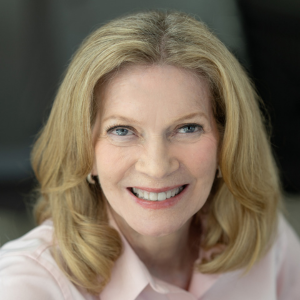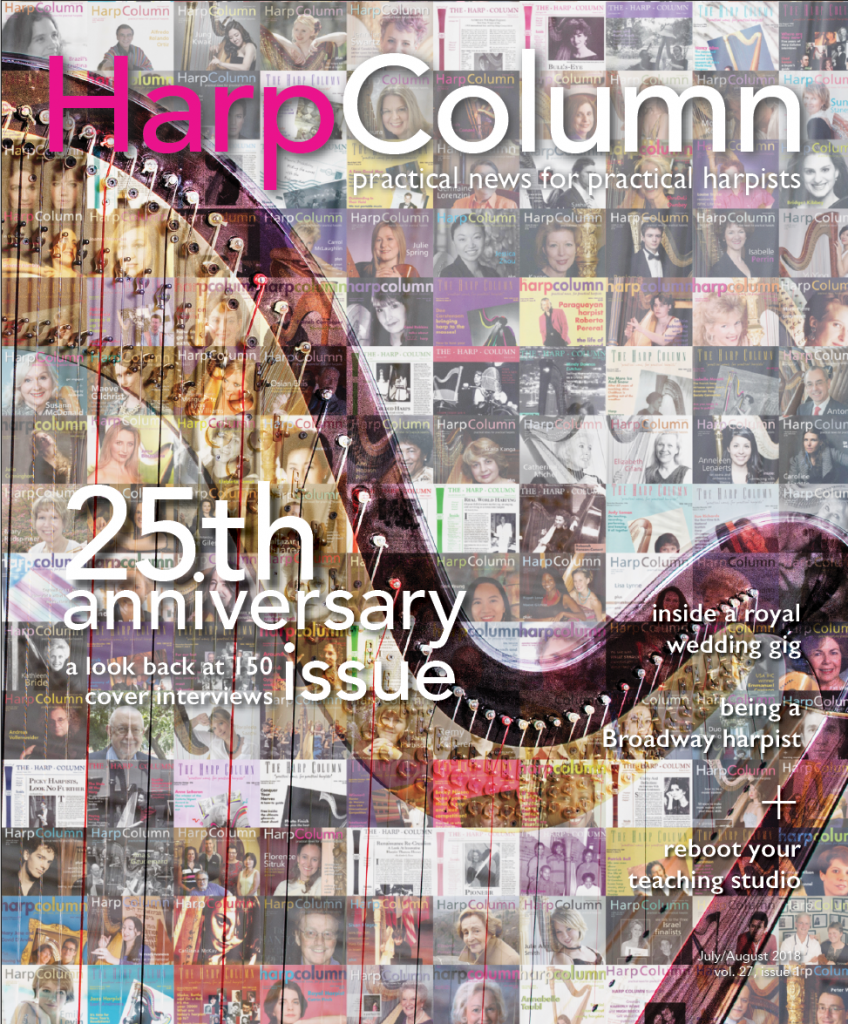Who would’ve thought when Kimberly Rowe first asked me to write a music review for her fledgling publication that I would still be doing it a quarter of a century later? A lot of music has passed across my desk in all that time—far more than I could ever include in six issues per year. I’ve tried to include all genres of music as well as selections for both lever and pedal harp. I’ve noticed some trends and have acquired some favorite composers and arrangers. In this anniversary issue we’ll take a look back at some of the highlights.
This retrospective barely scratches the surface. There isn’t enough space to mention all the noteworthy publications that have passed over my music stand in the last quarter century.
One trend is that there has been an increase in the number of publications for harp ensembles, including multi-level arrangements. It seems there are lots of harpists playing together, mixing various levels of ability and both lever and pedal harps. I’ve reviewed a lot of ensemble music over the past 25 years, and here are a few top picks for a second look.
My favorite arranger (and composer) of ensemble music is Stephanie Curcio. Some of her best work includes original pieces such as “Mist,” and “Pensive Moment.” She’s done Broadway classics like medleys from Les Miserables and The Fantasticks. She offers several gems in the baroque style such as “Air for Two Harps” by Handel. Her arrangements fall comfortably in the hands and use first-rate chord voicing. She deftly interweaves parts to create a seamless outcome.
Another outstanding arranger of ensemble music is Ken Gist. His Three European Carols for two harps is readily playable, entirely diatonic, and extremely charming. He has also produced The Kithara Christmas Collection for harp, flute, and cello (or viola) among others. Most of his published arrangements are holiday music and we need to see much more from him.
Another fine arranger and composer of ensemble music is Frank Voltz, with his original “Strolling through the Strings” being one of the most appealing. We can’t forget Deborah Henson-Conant’s entertaining “Off She Goes and She’s Gone” and Cindy Horstman’s jazzy “I Wonder as I Wander.” For more advanced harpists, Kathleen Bride’s edition of Grandjany’s Aria in Classic Style for three harps and HarpScores by Marguerite Lynn Williams are excellent.
There has also been a proliferation of music for lever harp as the quality of these instruments has improved exponentially and are no longer limited to folk or Celtic music in the key of C. One of the most significant contributors to the expansion of lever harp repertoire is Barbara Brundage. Eighteenth Century Music and both volumes of Classics on Request provide a substantial amount of serious repertoire for lever harp. Her “Clair de lune” transcription is exceptional. She finds creative ways to take difficult or chromatic pieces and adapt them to make the lever changes possible without sacrificing the integrity of the music.
Sylvia Woods has added some wonderful arrangements of popular standards with Groovy Songs of the ’60s, “Stairway to Heaven,” and “Christmas Time is Here.” Beth Kolle and Laurie Riley gave us a terrific volume of useful music for weddings in Wedding Music for the Lever Harp. Ray Pool produced the brilliant “American Classic Pop.”
Bernard Andrés is a prolific composer of music for pedal and lever harp, and ensemble music. His Automates collection is a superb assortment of diatonic dance forms that is sight-readable and suitable for almost any occasion. Every harpist should have this book in their gig bag.
There have also been numerous useful instructional materials published over the last 25 years. We now have a treasure trove of references for everything from Music Theory at the Harp by Kathy Bundock Moore, to Harp Fingering Fundamentals by Sylvia Woods. We have a resource for Troubleshooting Your Lever Harp from David Kolacny or Tuning Your Lever Harp in E-Flat from Ray Pool. Amplification is made simple in Deborah Henson-Conant’s Gurl’s Guide to Amplification. Harp Olympics by Susann McDonald and Linda Wood Rollo helps young beginners build a good foundation in a multi-volume series. It prepares young students both technically and musically. Adult beginners will benefit from the progressive exercises and illustrations of both correct and incorrect hand position in Kathy Bundock Moore’s Thumbs Up! Levers Up!
Several arrangers have helped us expand our gig repertoire. Some standouts include Tea at the Waldorf and American Classic Pop by Ray Pool. His stylish arrangements always include an interpretive second verse for those not comfortable with improvising. Remembering Jack Nebergall is a collection of Nebergall’s arrangements that combine an economy of notes with lush, sophisticated harmonies. He was a master of ballads and elegant chord voicings. Like Ray Pool, he uses tasteful special effects like pedal slides, harmonics, and bisbigliando so each tune sounds unique.
There have been notable additions to classical repertoire as well. Ellis Schuman arranged and edited Three Encores from the Late Baroque that are suitable in almost any setting. Carl Swanson’s edited version of Faure’s Une chatelaine en sa Tour puts this difficult piece into more playable form. The Yolanda Kondonassis Collection is a volume that no serious harpist should be without. These transcriptions, arrangements, and original works span the Baroque, Romantic, Impressionist, and Twentieth century eras and puts it all at your fingertips. Elizabeth Hainen successfully transcribed the complex piano music in Debussy’s Petite Suite for solo harp.
This retrospective barely scratches the surface. There isn’t enough space to mention all the noteworthy publications that have passed over my music stand in the last quarter century. Thank you to all those who have enriched us with their contributions. Here’s to the next 25 years! •







